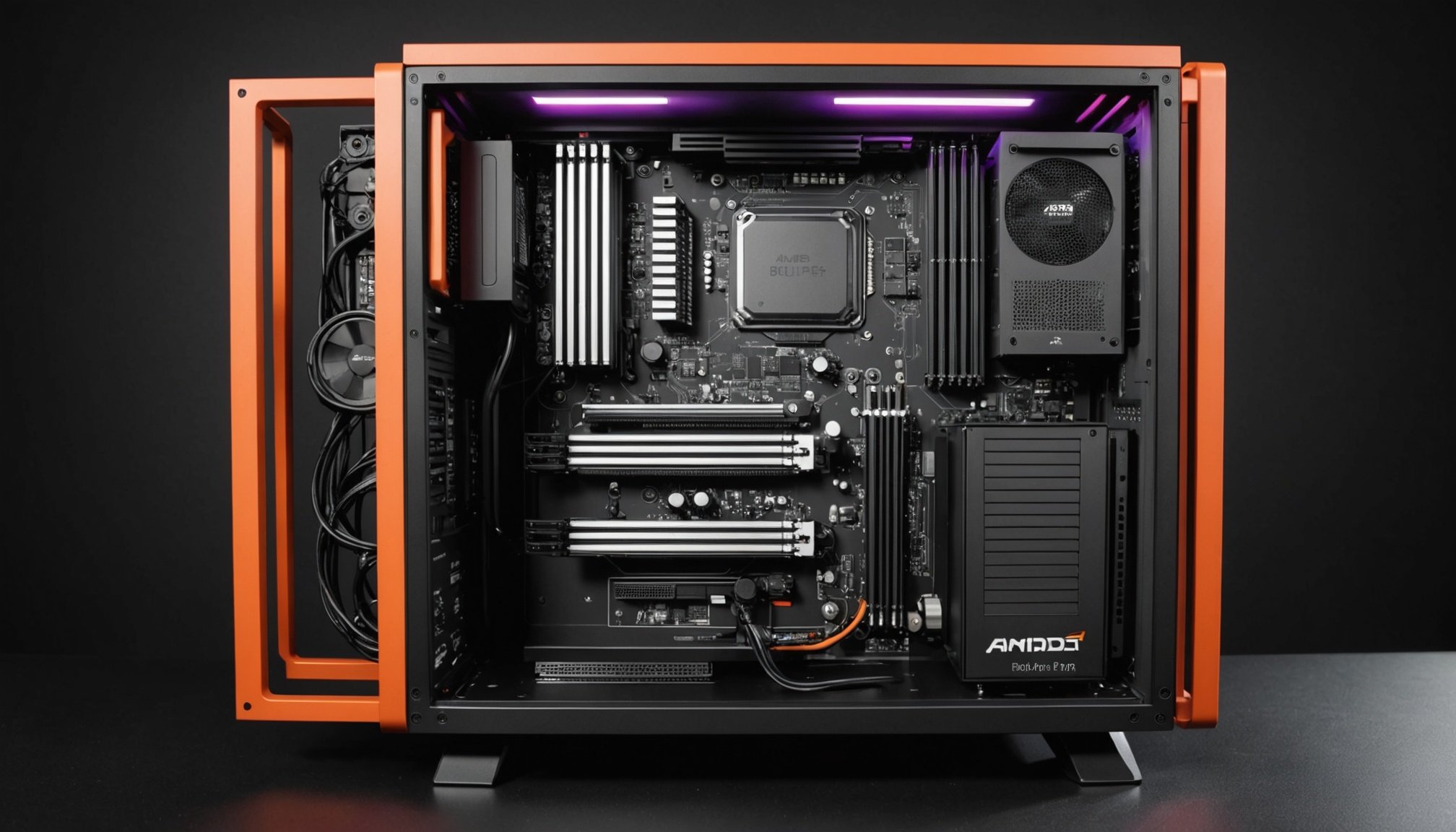Overview of AMD Threadripper for Video Editing
When it comes to video editing performance, AMD Threadripper is a powerhouse. This series of multi-core processors is designed to handle high-performance tasks with exceptional speed and efficiency. But let’s delve deeper into what makes Threadripper stand out in the competitive world of video editing.
Unlike traditional processors, AMD Threadripper is built to excel in multitasking environments. It boasts a high number of cores and threads, which is crucial for video editing applications that demand significant computational power. Multi-core processors like Threadripper can dramatically reduce rendering times, allowing for a smoother workflow and faster project completion.
Also read : Boosting gaming performance on a budget: top strategies for your dell inspiron 5502
Compared to other processors on the market, Threadripper delivers a competitive edge. Its unique architecture allows for superior parallel processing capabilities, making it ideal for tasks that require simultaneous execution of multiple processes. For editors who frequently work with high-resolution media and complex timelines, these processors ensure efficiency without compromise.
Incorporating AMD Threadripper into a video editing setup brings numerous advantages. Its ability to handle large data loads and execute complex calculations quickly is unparalleled, which is crucial for editors seeking optimal performance and reliability. With the rise of high-definition and 4K video editing, selecting the appropriate processor is essential for achieving professional results.
This might interest you : Unlock the full potential of your lenovo yoga c940 for effortless content creation in adobe premiere pro
Essential Components for Building the Rig
Creating an efficient video editing rig involves understanding various components like hardware selection and compatibility. This ensures seamless video processing and editing.
Choosing the Right CPU
When considering CPUs for video editing, particularly Threadripper models, focus on core count and clock speed. High core counts provide improved multi-threading performance, essential for handling complex video editing tasks. Additionally, clock speed influences how fast the CPU can process information—so higher values are preferable. Effective thermal management is crucial to handle the heat produced by these high-performance CPUs. Ensure you invest in an adequate cooling solution to maintain optimal temperatures and ensure longevity.
GPU Selection
A robust GPU is vital for DaVinci Resolve’s performance since it significantly accelerates rendering times. Recommended graphics cards for video editing include the NVIDIA RTX series and AMD’s Radeon Pro. It’s imperative to balance your budget with your performance needs. Over-investing in a GPU might not yield proportional benefits if other components do not match.
Motherboard Compatibility
Ensuring your motherboard supports your chosen Threadripper CPU is fundamental. Look for key features such as ample connectivity options and sufficient expansion slots. This provides not only compatibility but also future-proofing, allowing various peripherals and upgrades.
Setting Up DaVinci Resolve for Optimal Performance
To achieve the best results during your video editing endeavors, an effective DaVinci Resolve setup is crucial. Paramount to this is configuring initial settings tailored for efficient media management. Begin with organising media storage locations; opt for high-speed drives to ensure quick access and rapid playback.
Next, dive into project settings, as they significantly impact software optimization and improve overall performance. Select appropriate timeline resolutions and frame rates from the start, aligning with your end project format. This foresight avoids cumbersome rendering times later on and maintains workflow fluidity.
Now, turn your attention to performance tuning by managing cache settings and engaging optimized media options. Cache files should be stored on SSDs (Solid State Drives), given their quicker read/write capabilities. Additionally, creating proxies or optimized media lowers resolution during editing but retains full quality in final renders. This technique, pivotal in smoothing out playback, means your workflow remains uninterrupted, regardless of the complexity of your project.
For advanced performance, occasionally monitor both system hardware and software resource usage. Adjusting allocation levels can prevent bottlenecks—keeping DaVinci Resolve running smoothly at all times. Optimize your setup correctly, and relish the benefits of a streamlined editing experience.
Building the Rig: Step-by-Step Guide
Creating a video editing rig can seem daunting, but with a structured step-by-step process, it becomes an exciting project. By following these assembly instructions, you’ll be well on your way to crafting a powerful workstation.
Preparing Your Workspace
Before starting, ensure your workspace is clean and clutter-free. Gather essential tools and equipment, such as a screwdriver set, anti-static wristbands, and a magnifying glass for small details. Safety precautions are crucial; always ground yourself to prevent static damage to sensitive components. Organizing components efficiently can save you time and frustration. Lay out all parts logically and label smaller pieces for easy identification.
Assembly Process
Begin by assembling the motherboard, attaching the CPU and cooler, followed by RAM and storage. Be mindful of potential static when handling these components. Cable management is key: use zip ties to keep cables tidy and pathways clear for airflow. During assembly, a few common issues might arise, like loose connections; ensure everything is securely mounted. If problems persist, consult the manual or forums for specific hardware errors.
Testing Your Build
Upon completion, run benchmarks to test performance. This helps verify that all components are functioning correctly. If any hardware malfunctions, retrace your steps for secure connections. Fine-tune performance settings to optimise your rig for the best editing experience.
Budgeting and Cost Considerations
When planning for a video editing rig budget, estimating the total costs is crucial. The prices can vary significantly between budget and high-end configurations. A budget setup might merely cover the essentials, such as a capable processor, adequate memory, and a decent graphics card, delivering sufficient performance for basic tasks. Conversely, a high-end configuration can include top-tier GPUs, ultra-fast SSDs, and high-capacity RAM, allowing seamless handling of 4k, 8k, or HDR video.
A comprehensive cost breakdown enables an informed decision. Budget setups can range from $700 to $1,500, while premium rigs might stretch from $3,000 to over $10,000. It’s vital to weigh specific needs against these expenses, especially if the editing rig is for professional use where performance directly influences productivity.
The ROI for purchasing a professional editing setup can be substantial, especially in the film industry where high-resolution video processing is standard. Investing in efficient equipment may lead to smoother workflows and faster render times, thus maximizing output and potential profits. Whether for an aspiring YouTuber or an established filmmaker, understanding these financial considerations ensures the investment aligns with both current needs and future growth.
Common Pitfalls and Tips for Success
Navigating the world of video editing can be challenging, especially when encountering common pitfalls. During the build and setup phase, users often face issues that can hinder their editing workflow. A prevalent mistake involves inadequate system resources, such as insufficient RAM or an underpowered CPU, which are crucial for handling high-resolution videos smoothly.
Performance issues can stem from improper software configuration. For instance, failing to update graphics drivers or using outdated video editing software versions can significantly impact performance. Troubleshooting these problems often begins with ensuring that all system drivers are current and that the software settings are optimized for the specific project requirements.
Incorporating best practices helps maintain efficiency. Organising files and using proxy files for heavy video formats can lighten the load on your system. Regularly saving your projects and creating backups prevent data loss and save time in case of a crash.
By understanding and addressing these video editing pitfalls, editors can enhance their workflow, leading to more efficient and enjoyable editing experiences. Implementing these strategies not only solves immediate issues but also lays the groundwork for future success in video editing.











